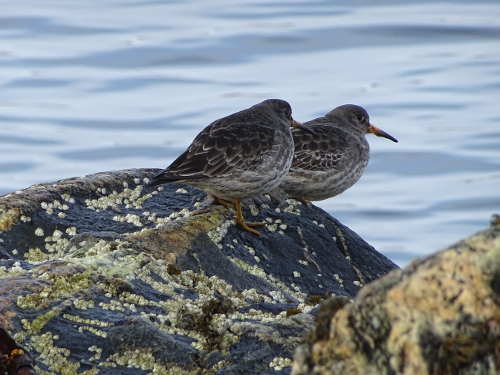DEB2017 School (incl. Symposium): description
May 21 - 30 (workshop) & May 31 - June 02 (Symposium) Tromsø, Norway

This is an advanced training course on DEB theory. The objective is to train participants in estimating DEB model parameters for their species during 8 days. Trainees will come together in Tromsø and interact with skilled scientists actively involved in applying DEB to their own research. The teaching team will present exciting lectures on applications of the theory in a variety of fields: environmental quality management, ecology, fisheries, population dynamics .... It is also the ideal format for networking and strengthening international cooperation. We further expect this training to generate many new high quality entries in the online AmP database of DEB models and parameters.

Download the full course document here
Pre-course work
- Follow the DEB tele-course (optional but highly recommneded)
- Prepare a discussion topic (0.5 A4). The topic preferably relates to potential DEB applications in your own research, where you can pose questions about problems that you expect to meet in such applications.
- Compile data for your pet, preferrably already in a mydata-file.
Course topics
- DEBtool : introduction to the manual
- AmP software: how to use, be able to make own files
- Applications of DEB theory
- Biophysical ecology (Mike Kearney)
- Trajectory reconstructions (Laure Pecquerie)
- Environmental impacts assessments (Elke Zimmer)
- Deep sea fisheries (Starrlight Augustine)
- Implied properties of parameter values
- Comparison of species on the basis of parameter values
- Modelling: Ordinary Differential Equations, criteria, assimilation and production models, individual dynamics
- Parameter estimation: criteria, + numerical aspects (local max), covariation method, parameter identification, confidence intervals, sensitivity (Dina Lika, Gonçalo Marques)
- Alternative approaches (Bas Kooijman):
- position of DEB theory in the literature
- history of energetics
- static VS dynamic
- assimilation/production
- Step from individual to population models (Bob Kooi, Roger Nisbet, Jaap van der Meer, Jean-Christophe Poggiale)
- Outlook for the field: role of metabolic organisation in biological sciences, major challenges
- Methods
- Applications
- Coherence over levels of organisation

Calidris maritima, the purple sand piper.

